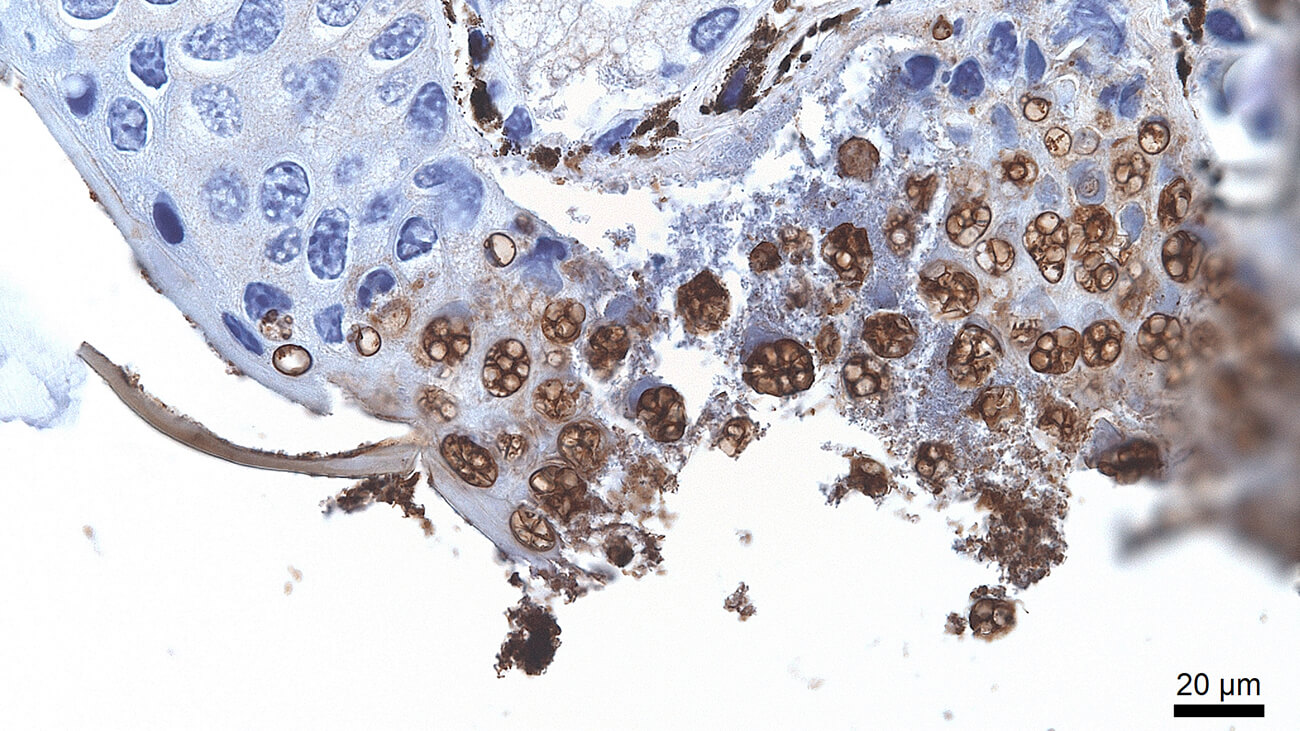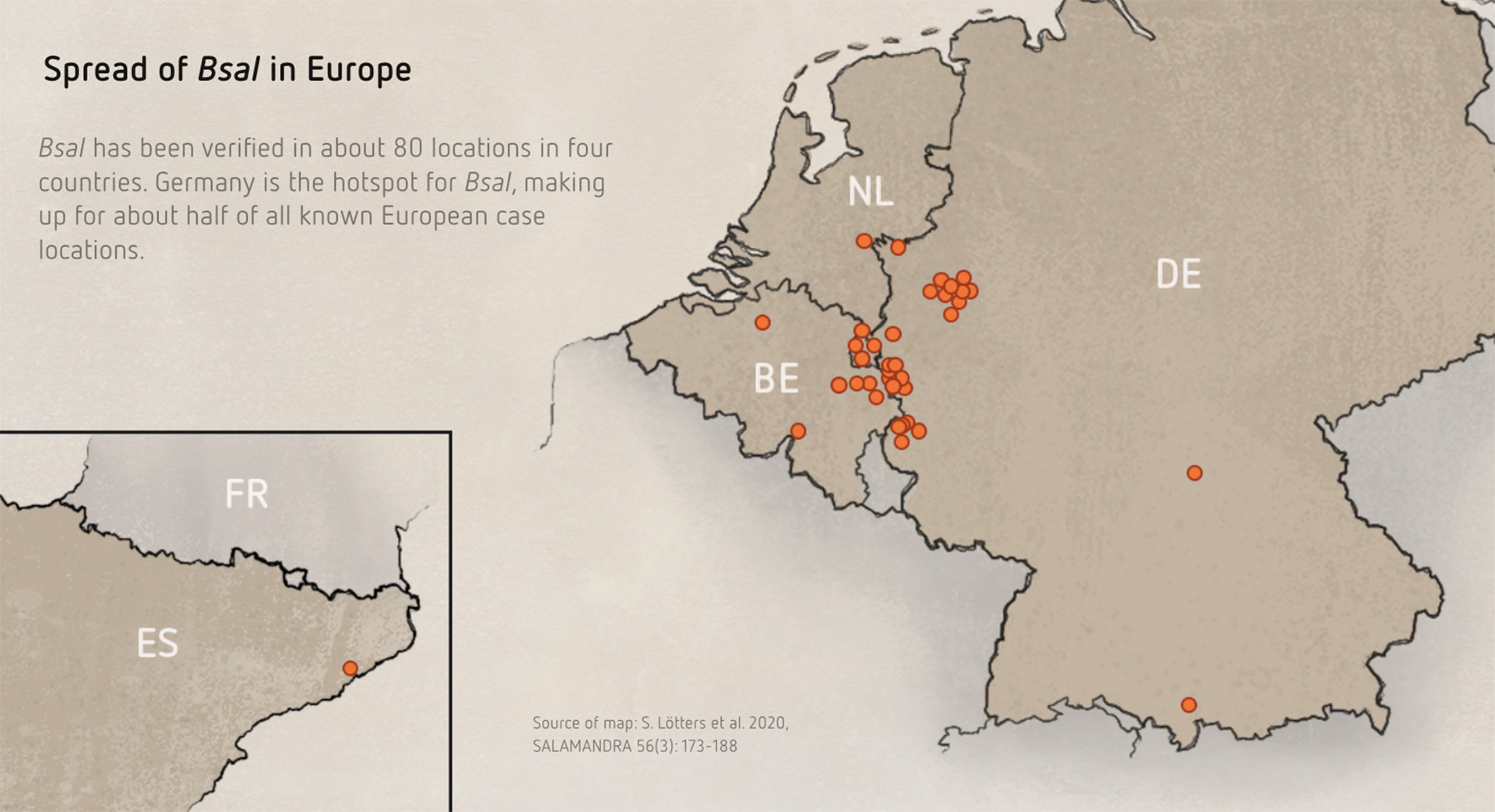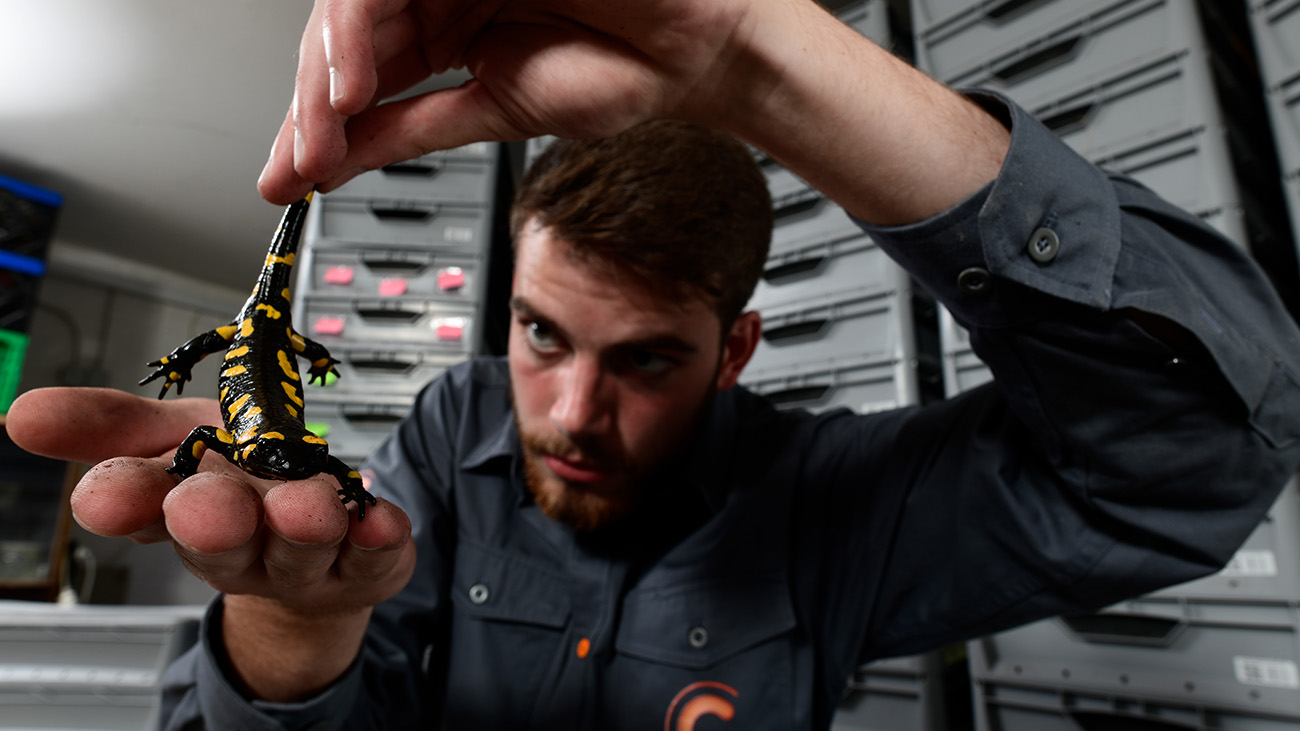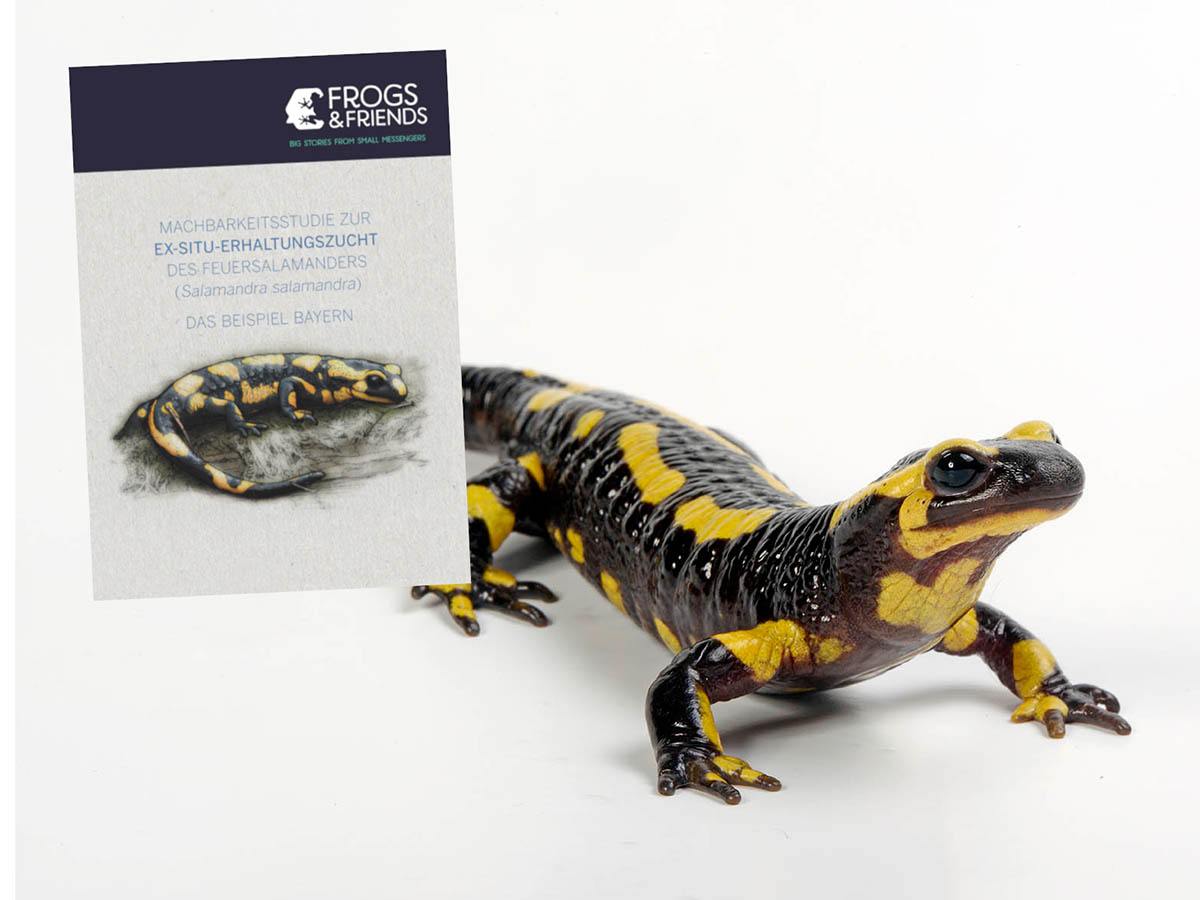Bad start into the new millennium for Europe's Fire Salamander
A new type of fungus on the skin of amphibians was discovered in the Netherlands only a few years ago: Batrachochytrium salamandrivorans, or Bsal in short. The translation of its name clearly spells out the danger it poses: the salamander devourer. It is spreading at breakneck speed among European caudates. While newts overall seem to be less affected, an infection is almost certain to be fatal for fire salamanders. Entire populations are threatened by extinction.
Where did the fungus epidemic come from?
It is assumed that Bsal originates in East Asia and found its way into Europe through the trade with Asian newts. It could, however, also have travelled with aquatic plants or in a moist clump of clay: put simply, we do not know. What we do know is this: it will stay. And spread further – with devastating consequences. Bsal got into open nature somewhere in the tri-border region between Germany, the Netherlands and Belgium at the beginning of the 2000s. From here, the fungus moved towards the East and seized the Ruhr area. By summer of 2020, it had eventually managed to make a giant leap across 500 kilometers and appeared at several locations in Bavaria.
Where did the fungus epidemic come from?

Batrachochytrium salamandrivorans © Frank Pasmans, Uni Gent

The fungus leads to regional extinction of the fire salamander
Bsal afflicts the delicate skin of the amphibians. It feeds on keratins and sprawls so massively that it ultimately leads to an outright suffocation of the animals. External skin damage becomes apparent only at an advanced stage, and by this time it is usually already too late. For fire salamanders, an infection with Bsal almost inevitably leads to death. In other words: in regions where the fungus appears, the fire salamander is effectively being extinguished.
Extinction can be prevented
Bsal is treatable – but unfortunately only in human care. Heat therapy has proven effective against the type of fungus known to date. After two weeks in a heat chamber at a constant temperature of 25 °C, the fungus dies. Although salamanders prefer cooler temperatures, they usually survive the procedure well. This means that infected animals can be nursed back to health.
However, no therapy can help in the biotope, and cured salamanders cannot be returned there unless they are to fall ill again. This is because heat therapy does not build up immunity, and the fungus still lurks in the forest.
Therefore, the only option for safely preserving affected fire salamander populations is to take animals from them into human care and breed them there. Like on an ark, they can then survive until, hopefully, one day the situation in their habitat is safe again, the animals have developed immunity or resilience to the fungus, or there is a possibility of vaccination.

Building up reserve populations from local fire salamander stocks ensures that their offspring can repopulate these areas in future.
How arks can be designed
To save not only individual fire salamanders, but the entire species, you need a few arks. Putting all your eggs in one basket, for example keeping all the animals in one location, may be economically efficient, but the risk of all the animals being affected in a local disaster is far too great. There are also different ways to design such an ark, especially if you want to preserve the fire salamander’s diversity. Genetic diversity plays a central role here, as this has already been studied reasonably well. But what about, for example, the diversity of bacteria and other microorganisms that fire salamanders have in their gut or on their skin?
To have as many options as possible for the future, we need a network of arks. What this might look like, what to consider, where to start, and more is what we have put together on behalf of the Species Assistance Program for the Fire Salamander in Bavaria. This blueprint can easily be adapted for other regions. If you like, you can take a look at the german study here.

A network for Fire Salamanders
Many organisations and institutions are working in numerous individual projects for the benefit of the Fire Salamander, both in the habitat (in situ) and through the establishment of conservation breeding in human care (ex situ). However, in order to preserve the species in its genetic and ecological diversity in the long term, it is essential that these conservation and research endeavours are aware of each other, that their results are pooled for all to see and that conservation breeding is coordinated.
This is why Citizen Conservation, in collaboration with other organisations and institutions, invited people to a major Fire Salamander Symposium at Hannover Adventure Zoo from 17 to 19 April 2024. This is where Feuersalamander.NET was founded, a network that will also serve as a central reporting, information and coordination centre for efforts to protect fire salamanders and, in the future, Alpine Salamanders. Such coordination is particularly important in the establishment of ex situ conservation breeding programmes so that scarce resources can be used with maximum effect to preserve Fire Salamanders in all their diversity.
The salamander devourer on film
Author Susann Knakowske accompanied scientists, conservationists and animal owners on film for over a year. It wasn’t planned, it just turned out that way. Because neither Corona nor the Bsal jump to Bavaria were on the filming schedule when we began preparations for a fire salamander documentary at the end of 2019. And this story is far from over. But the first film is ready and gives an overview of the state of affairs regarding salamander eaters in spring 2021.
Every donation helps us further expand our network for endangered species
Establishing and coordinating conservational breeding of fire salamanders is key to their salvation. Citizen Conservation has set its aim on precisely such action, working to drastically increase the number of shelters in human custody for threatened animals – we will need these safe zones. Here and now for our endemic fire salamander.
Our donation account
Citizen ConservationGLS Gemeinschaftsbank eGDE38 4306 0967 1271 7068 00BIC: GENODEM1GLS

Our donation account
Citizen ConservationGLS Gemeinschaftsbank eGDE38 4306 0967 1271 7068 00BIC: GENODEM1GLS

The extinction of species is threatening our livelihoods. Citizen Conservation unites scientific expertise with engagement by civil society. Together, we can master the challenge.